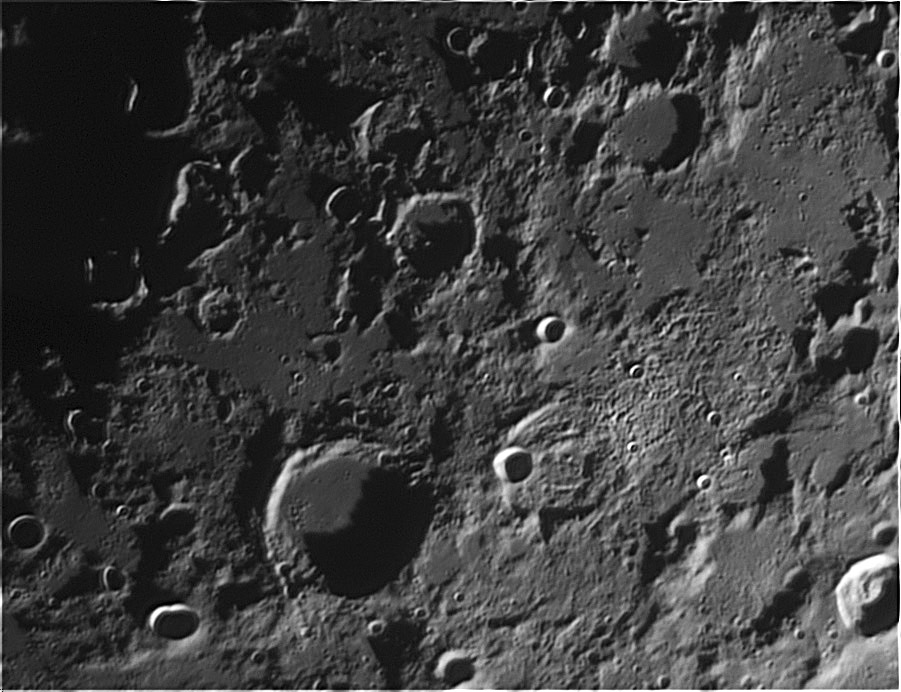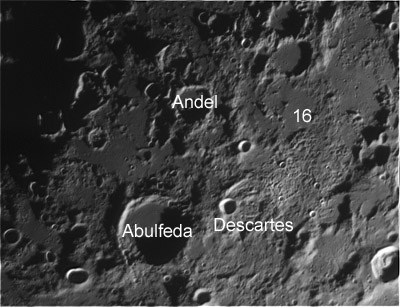Slightly Less Mysterious
Originally published March 6, 2010

image by Jocelyn Sérot, France; north to the upper right

|
The Apollo 16 landing site near the crater Descartes was selected because the smooth plain north of the crater and the hilly deposit spreading from the crater floor and over the northern rim both looked like volcanic materials. The plains had been interpreted as light-hued lava flows, and the hills were thought to be volcanic cones. But as soon as Commander John Young landed and looked out the window of lunar module, he saw no signs of volcanism. He uttered his famous line that it looked like the geologists who thought it was all volcanic would have to go back to the drawing board or where ever geologists go. The Apollo 16 astronauts sampled the edge of the hilly terrain and the smooth plains and found that the rocks were all impact breccias. Breccias are rocks made of bits and pieces of other rocks that had been smashed and shocked by impacts and somehow glued together. No lavas were found. This surprising discovery broke the back of the idea that all kinds of volcanism existed on the Moon. But now we know from the Diviner experiment on the LRO that there are some definite volcanic materials (at the Gruithuisen domes and elsewhere) that are much more silica-rich than mare basalt. Diviner does not suggest that the Descartes Hills are volcanic, but their morphology is unique - it is easy to believe that they should be volcanic.
Chuck Wood
|
Technical Details
Feb 20, 2010, Mewlon 210 @ f/24, DMK 31, Avistack
Related Links
Rükl plate 45
Yesterday's LPOD: Bringing the Moon Indoors
Tomorrow's LPOD: Improved Gravity Eyes
Register, Log in,
and join in the comments.





